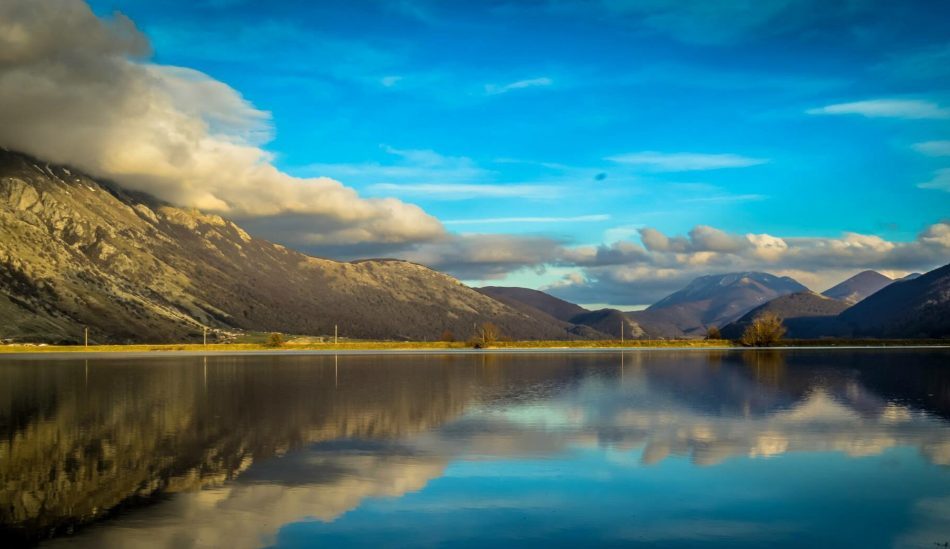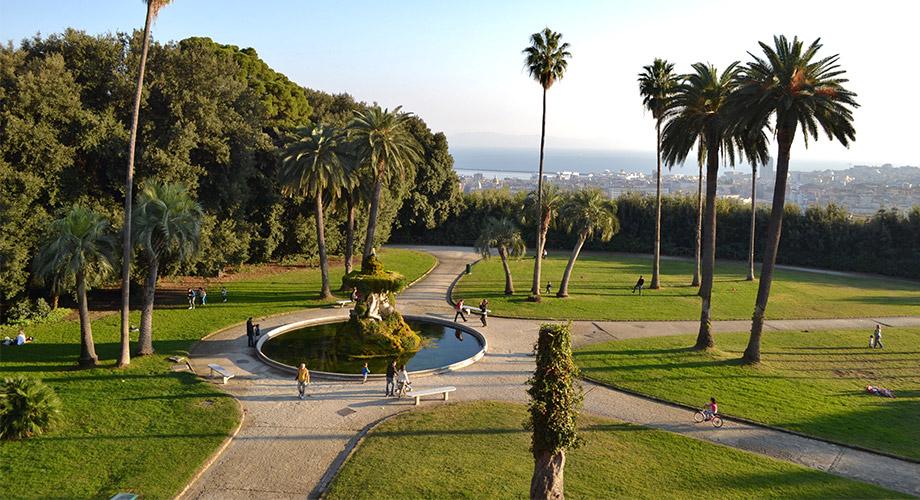
A selection of the most important parks and gardens of Naples, real green oases to relax in the city.
In Naples there are numerous parks and gardens which represent important green lungs for the city, areas where you can walk, jog, relax or have a picnic. Some of these oases even have a important historical and cultural value or because they are integral parts of a Royal Palace or because they contain works and monuments made by great artists or architects.
Built in different periods and with different architectural styles, large or medium-sized, the parks of Naples are uncontaminated areas not to be missed.
From the High Hill of Camaldoli to the Lungomare, here is a selection of the most important green areas.
Wood of Capodimonte
The Real Bosco di Capodimonte is located in front of the homonymous palace and, with its 124 hectares, is considered the green lung of excellence of Naples. It was a hunting reserve of King Charles of Bourbon from the 1735 and was opened to the public under Ferdinando I. It is a large city oasis, consisting of an English garden with over 400 old trees that is divided into 5 large avenues in which to rest, run or ride a bike. Inside there are some historical buildings, such as the Porcelain Factory and the Capuchin Hermitage, and a splendid one Belvedere from which to admire the city.
It is accessed through three entrance doors (Porta di Mezzo, Porta di Miano and Porta di Santa Maria dei Monti), reachable after passing through the gardens of the Palazzo Reale.
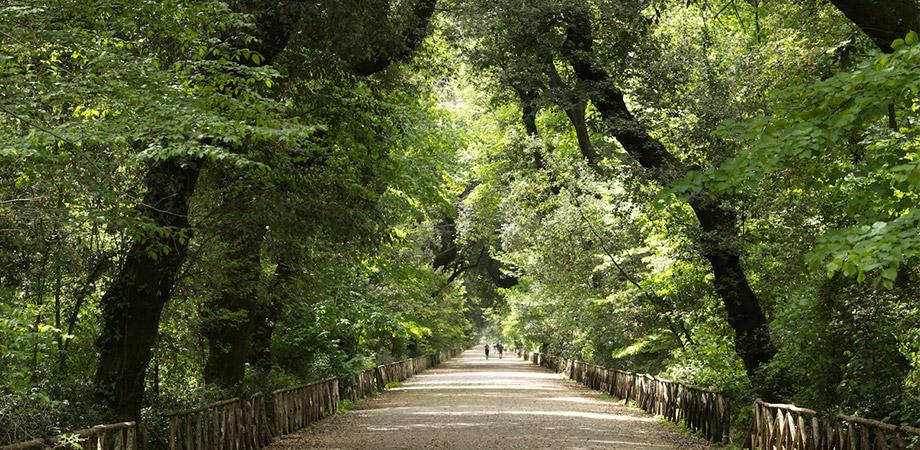
![]() Address: via Miano, 4 - 80145 Naples
Address: via Miano, 4 - 80145 Naples
Virgilian Park
It is located in the well-to-do Posillipo district and is one of the most beautiful sights of Naples. He was initially called Memorial Park in honor of the fallen of the First World War, and then take the current name in honor of the poet Virgil. His is a terraced structure that, thanks to the position in the hills, allows you to observe one beautiful view of the Gulf of Naples, of the islands of Ischia, Capri, Procida and Nisida, of the Gulf of Pozzuoli up to the Sorrento Peninsula.
Inside there are also the busts of Simón Bolívar and Mohandas Gandhi, a play area for children, one athletics track e numerous kiosks with drinks, snacks and ice creams.
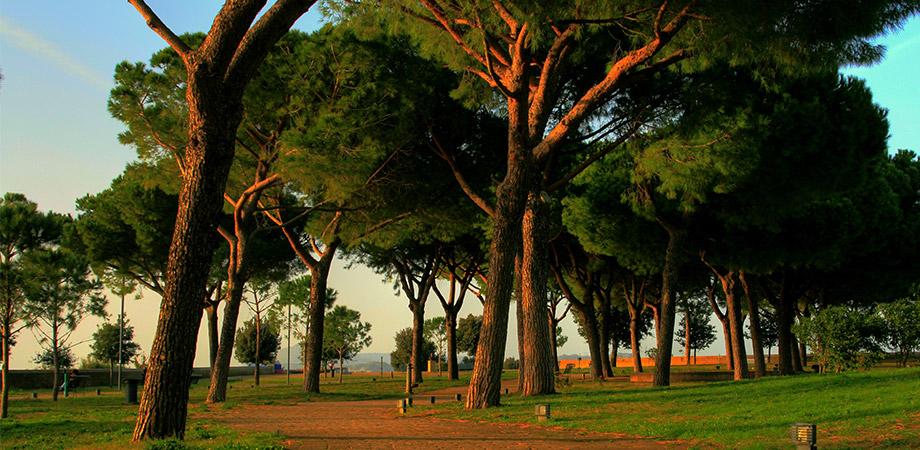
![]() Address: Viale Virgilio - 80123 Naples
Address: Viale Virgilio - 80123 Naples
Floridiana
La Floridiana is an important complex in the hilly district of Vomero which includes a large green area and a Villa from which it takes its name. The building, in fact, was purchased by King Ferdinand IV of Bourbon, who donated it to his wife Lucia Migliaccio, Duchess of Floridia, and is currently home to the Museum of Ceramics, Duke of Martina.
The park consists of a series of cool paths and thickets, including that of camellias, and a large lawn where you can relax, while the Belvedere offers a spectacular view of the Gulf of Naples. Walking you can still see some of the fake ruins wanted by his architect and an outdoor theater called the "Verzura", as well as a fascinating circular temple of Ionic order.
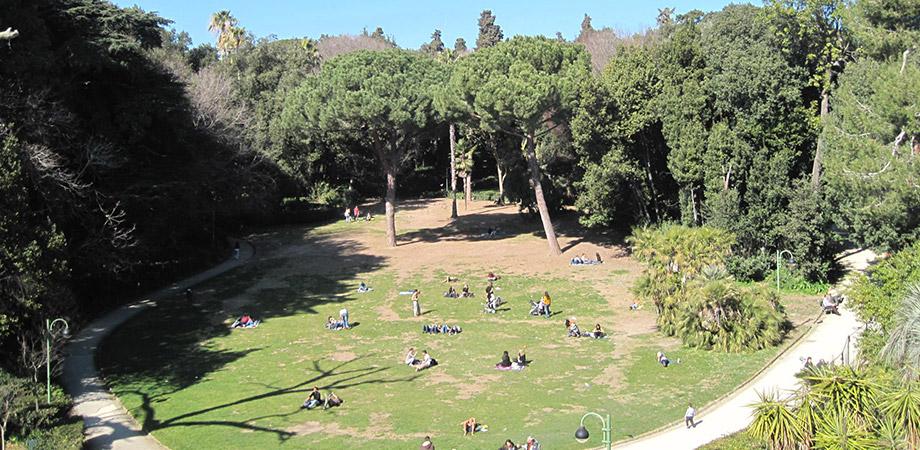
![]() Address: Via Domenico Cimarosa, 77 and Via Aniello Falcone, 171 - 80127 Naples
Address: Via Domenico Cimarosa, 77 and Via Aniello Falcone, 171 - 80127 Naples
Park of the Camaldoli
The Camaldoli Park is located on the hill of the same name, the highest in the city, and was opened to the public in the 1996. Thanks to its strategic position offers one of the most complete views of Naples and surroundings, ranging from the Campi Flegrei to Vesuvius and, if you are lucky, you can even spot raptors. It is very famous for the presence of tens of chestnut trees, of typical plants of the Mediterranean and Holm oaks.
The park is a meeting place for young people and venue of events, concerts, fixedand, markets and stands of various kinds, especially during the summer when the weather is more favorable.
Nearby is the Hermitage of Camaldoli, currently run by the Sisters of Santa Brigida, which houses important works by Luca Giordano.
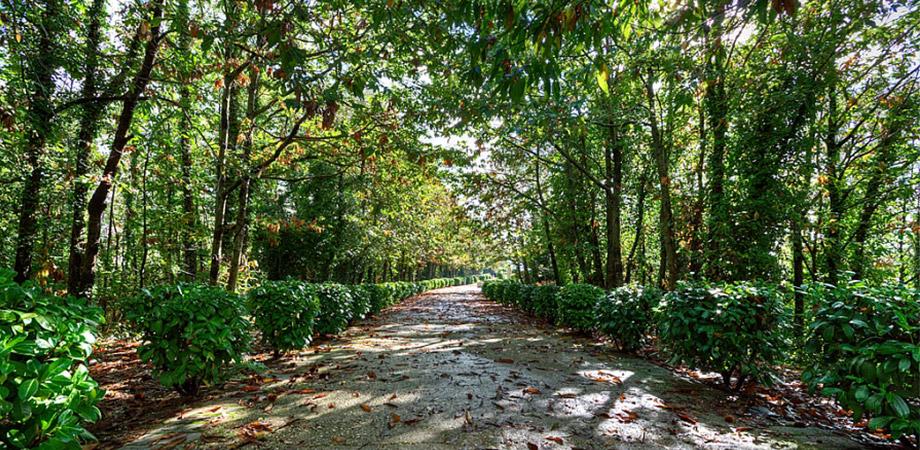
![]() Address: Viale S.Ignazio di Loyola - 80131 Naples
Address: Viale S.Ignazio di Loyola - 80131 Naples
Astroni Nature Reserve
The Astroni Nature Reserve is aOasis of the WWF and is one of the largest and best preserved craters in the Campi Flegrei area. It is indeed a Volcano off and inside there are three hills (Imperatrice, Rotondella, Pagliaroni), three lakes (Lago Grande, Cofaniello Piccolo and Cofaniello Grande) and a dense vegetation typical of lake areas with reeds, rushes and willows. The fauna is very varied and the animals that live in the Reserve are many, including dozens of species of migratory and permanent birds, birds of prey, volpi, weasels, hedgehogs, dormice and moscardini.
You can participate in delle thematic guided tours, routes that lead to the discovery of the crater bottom, of the ponds, of the geology of the area, of the life in the wood or purely scenic itineraries and for the observation of the birds.
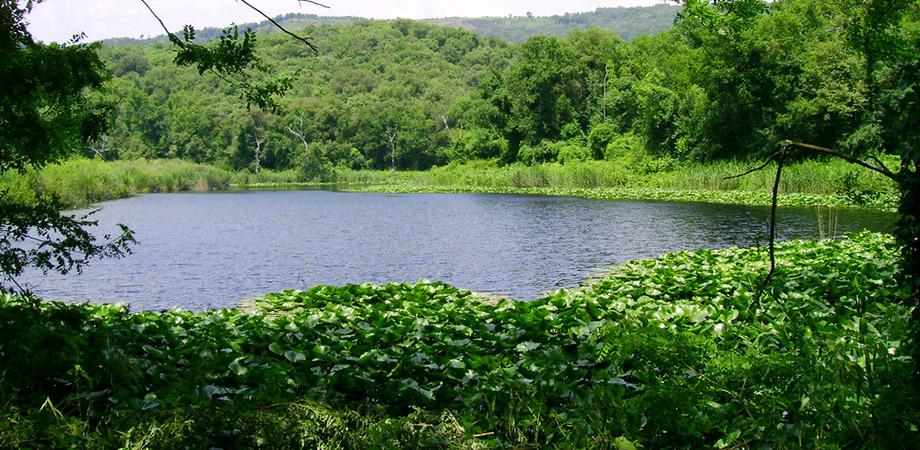
![]() Address: Via Agnano ai Astroni, 468 - 80125 Naples
Address: Via Agnano ai Astroni, 468 - 80125 Naples
Park of the Poggio
It is located on the Colli Aminei and is another vantage point on the city. Made inside a tuff quarry, presents on the bottom a pond fed by small waterfalls and is structured in a series of terraced levels covered by a rich vegetation of pines, holm oaks, brooms and Mediterranean scrub.
A large avenue connects the areas of the park where there arechildren's play area, a botanical garden and various dining options. Especially during the summer there are numerous events and shows and among the most famous and popular there is the review of outdoor cinema with the screen placed on a platform on the body of water.
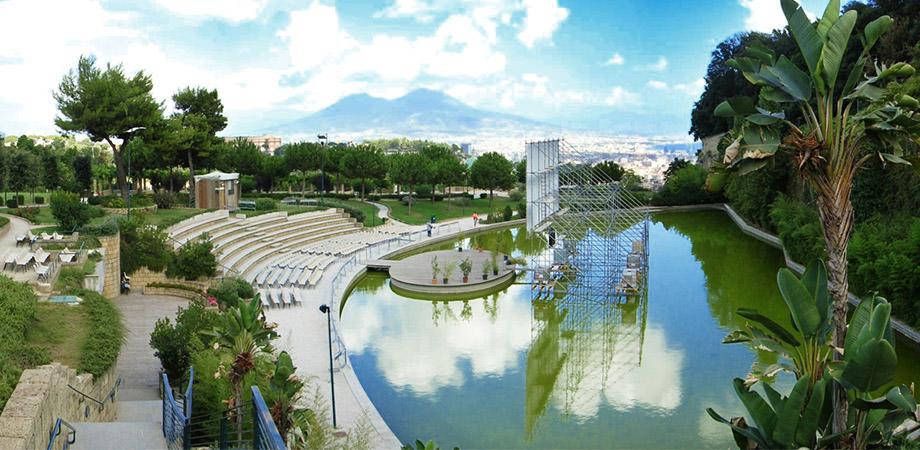
![]() Address: Viale Poggio di Capodimonte - 80131 Naples
Address: Viale Poggio di Capodimonte - 80131 Naples
Villa Comunale
It's an important one historic garden of Naples that flanks the Riviera di Chiaia on one side and the city Lungomare on the other. The Villa is fenced around the perimeter and has various entrances on the sides, while the main one is on Piazza Vittoria. It was built in 1780 during the reign of Ferdinand IV who wanted it inspired by the gardens of the Tuileries in Paris so that the nobility could have a place of walking and meeting.
The tree-lined avenues of the Villa are adorned with neoclassical copies of Roman statues from the Royal Palace of Caserta, busts of famous people and fountains of the late Renaissance age. There are also the Anton Dohrn Zooligic Station, the Casina Pompeiana and an imposing one Harmonic Box and it is one of the most popular places for citizens and tourists.
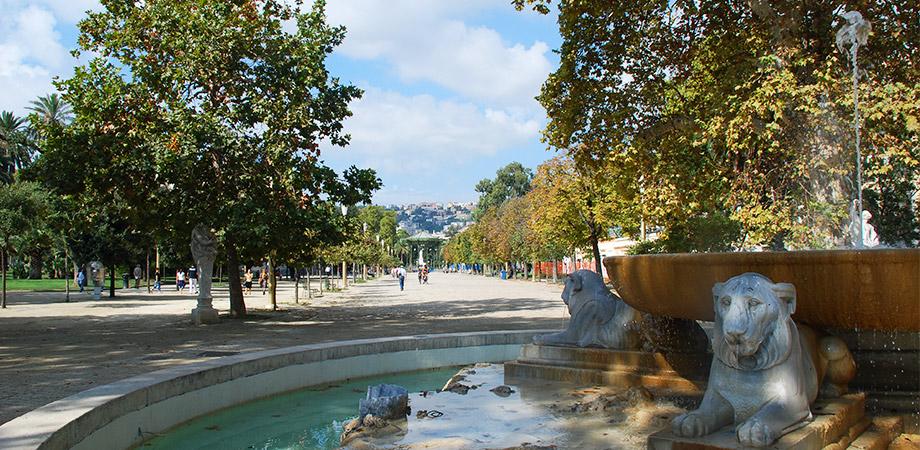
![]() Address: Piazza Vittoria and Piazza della Repubblica - 80121 Naples
Address: Piazza Vittoria and Piazza della Repubblica - 80121 Naples
Mostra d'Oltremare
The Mostra d'Oltremare is located in the Fuorigrotta district and is one of the most important exhibition venues in Italy. The long Avenue of the 28 fountains leads to the Mediterranean Theater, often a venue for concerts and events, and is flanked by numerous pavilions that host important events throughout the year. Among the best known are the Comicon and the Casa Fiera.
In a large green area there is the faithful reconstruction of the Castle of Gondar in Ethiopia on the Laghetto di Fasilides, in whose waters the protected species of the Emerald Toad lives, while in the Viale delle Palme sports and leisure events can be held.
Other relevant structures are the impressive Fountain of the Esedra, sometimes used for fascinating games of light and water, and the monumental Golden Cube.
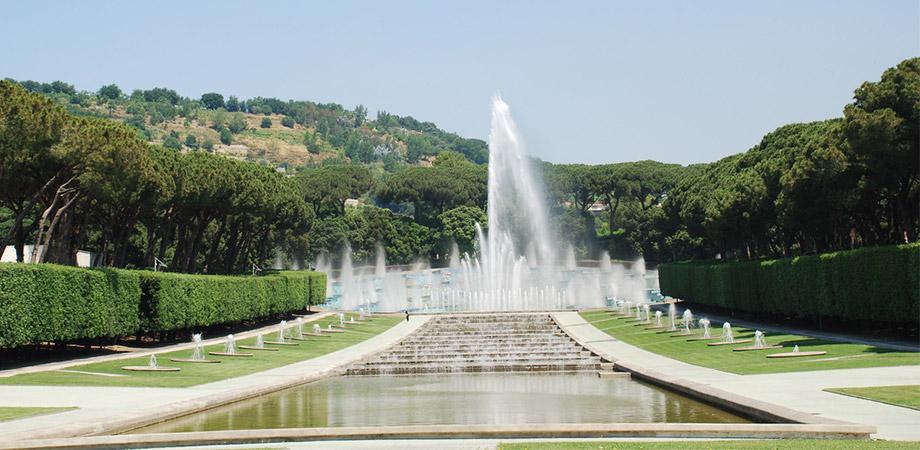
![]() Address: viale JFKennedy 54, via Terracina 197, via A.Usodimare - 80125 Naples
Address: viale JFKennedy 54, via Terracina 197, via A.Usodimare - 80125 Naples
Botanical Garden
It is part of the Faculty of Mathematical, Physical and Natural Sciences of the Federico II University and it hosts approximately 25000 specimens of plant species. In the long avenues that are articulated in its 12 hectares it is possible to admire plants and trees of all kinds, grouped according to specific criteria. There are thecitrus, palm grove, desert with succulent plants, the beach with the most widespread plants on Italian beaches, the Mediterranean scrub, the bog and many tanks with hydrophytic plants.
In the Garden there are also different types of greenhouses, in addition to a castle that is home to the museum of paleobotanica and ethnobotany.
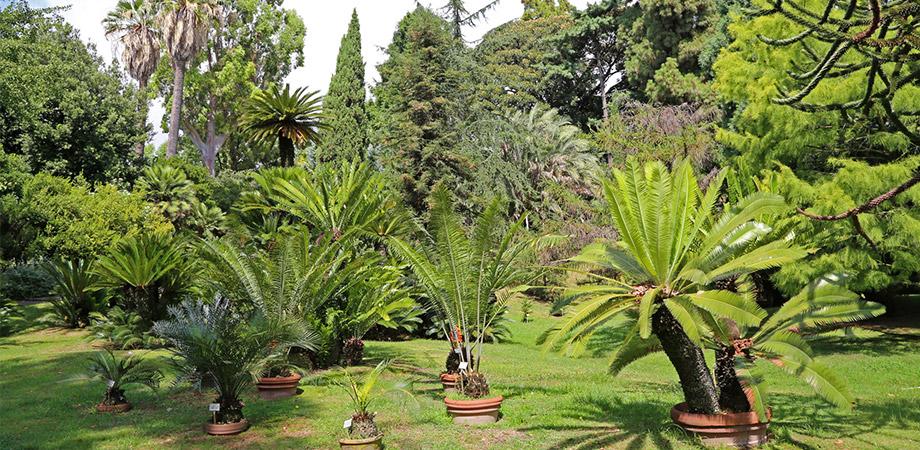
![]() Address: via Foria, 223 - 80139 Naples
Address: via Foria, 223 - 80139 Naples
Parco Vergiliano
Not to be confused with the Virgilian, this Piedigrotta park is famous because it is located there tomb of Giacomo Leopardi, a large monument with a stele signed by Vittorio Emanuele III.
It owes its name to the presence of another important tomb, consisting of a columbarium on the top of a stairway: it is that of the great poet Virgil, who for many years lived in Naples, establishing a deep bond with the city.
In the park you can also see one of the entrances of the Crypta Neapolitana, a historic Roman gallery that linked Mergellina to Fuorigrotta, disused for many years. A nice curiosity about some "Signatures" of tourists from '700 and' 800 that can be seen on a pipeline in the 1668: just like today, they wanted to leave a mark of their passage.
The park is not very large, but allows a pleasant walk among these important points of historical interest and is a small oasis in the city.
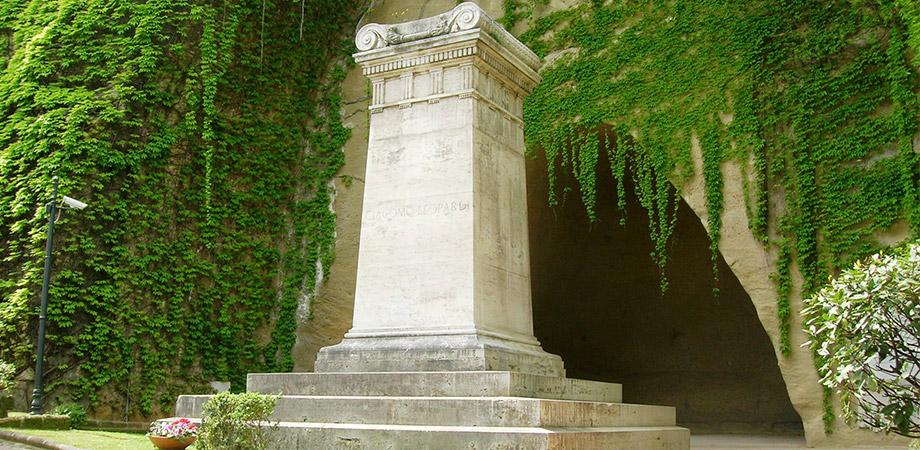
![]() Address: Ascent of the Cave - 80122 Naples
Address: Ascent of the Cave - 80122 Naples
Villa Pignatelli
The Villa Pignatelli, on the Riviera of Chiaia, is one of the most important testimonies of neoclassical architecture in Naples and is surrounded by a well-kept and large green area. The building houses the Museo Diego Aragona Pignatelli Cortés and the Carriage Museum and the exterior is inspired by a domus of Pompeii. The interiors are very elegant, with three sitting rooms, a ballroom, a large library and a neoclassical veranda.
After having visited it, it is very pleasant to take a walk in the big park in which there are also a neogothic tower, the Swiss chalet and a greenhouse.
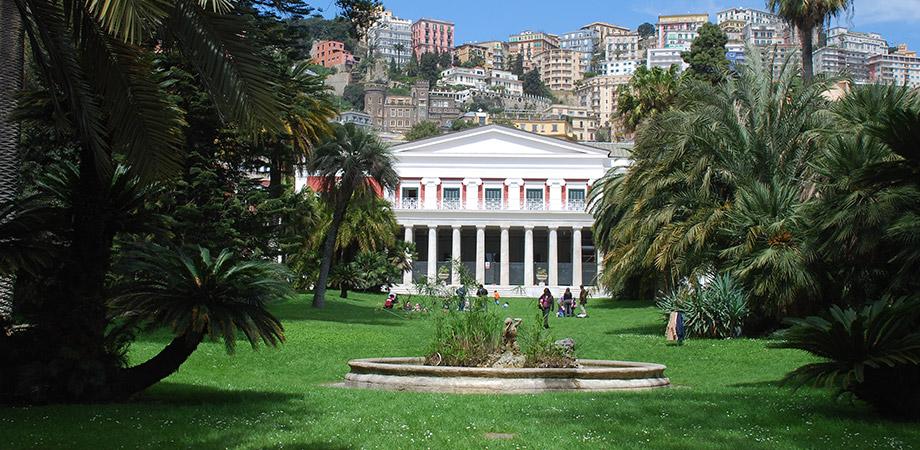
![]() Address: Riviera di Chiaia, 200 - 80121 Naples
Address: Riviera di Chiaia, 200 - 80121 Naples
Park of the Quartieri Spagnoli
Located in the historic center, the Parco dei Quartieri Spagnoli is part of the largest complex of the Holy Trinity of the Nuns, founded at the beginning of the '600 and intended for military hospital two centuries later by Napoleon. The green area is very extensive with its 16000 square meters and inside there are some play areas for children, a space where outdoor shows are held tree-lined gardens which were once part of the cloister of the former convent.
It is a green lung little known by the Neapolitans, but allows you to isolate yourself from the chaos and stress, while remaining in one of the most crowded areas of the city.
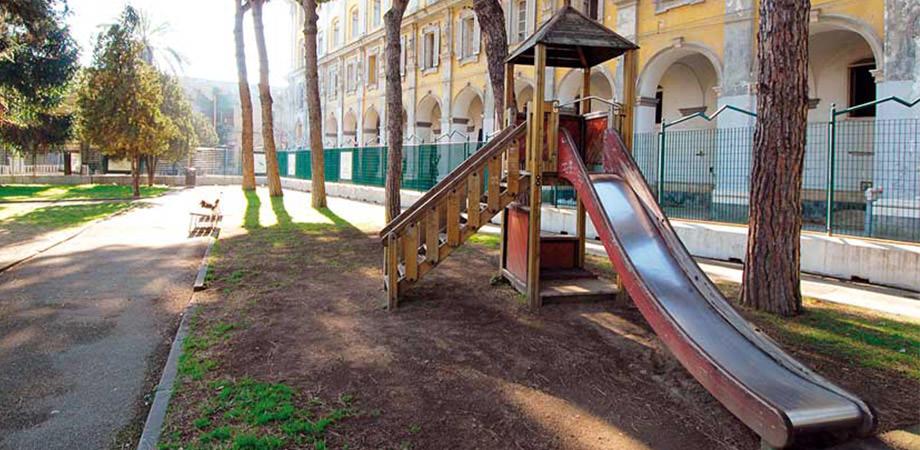
![]() Address: Vico Trinitá delle Monache - 80134 Naples
Address: Vico Trinitá delle Monache - 80134 Naples

